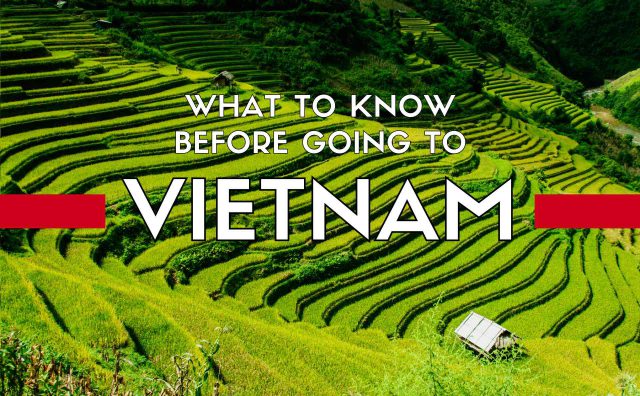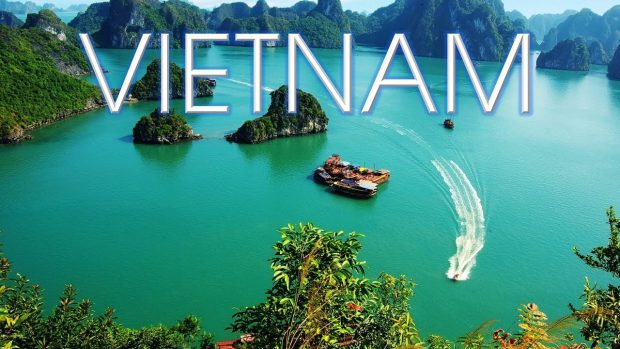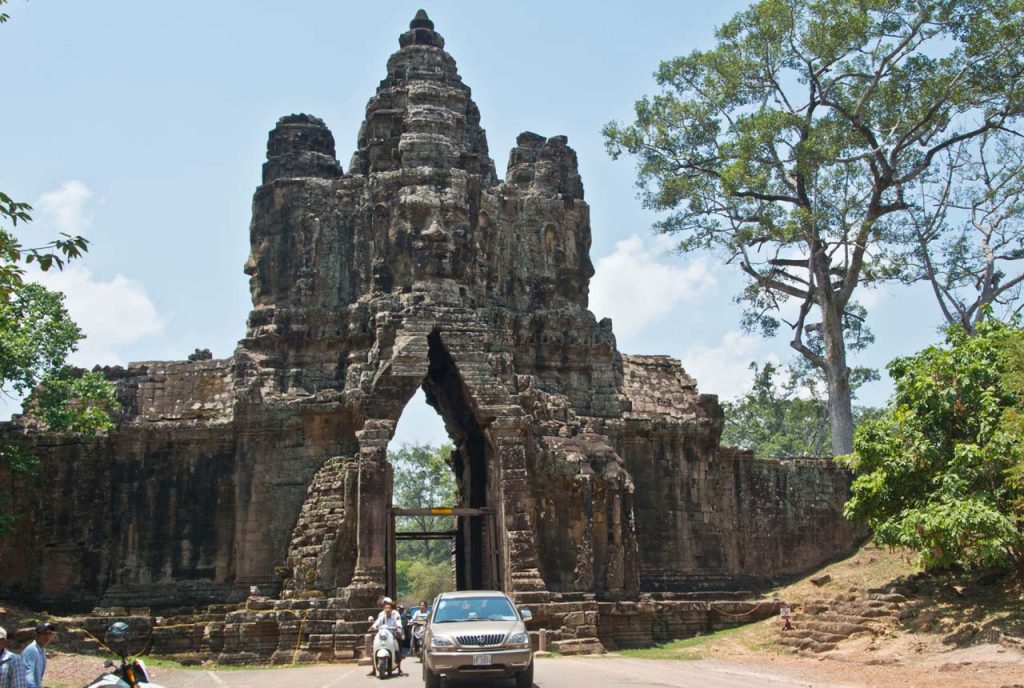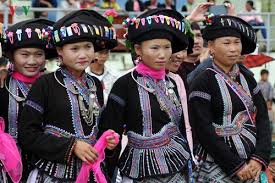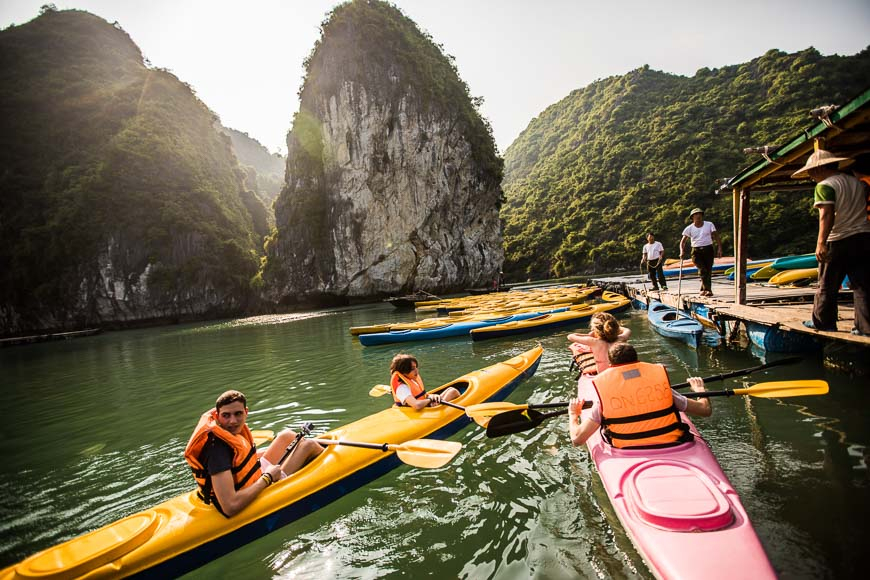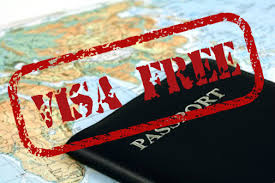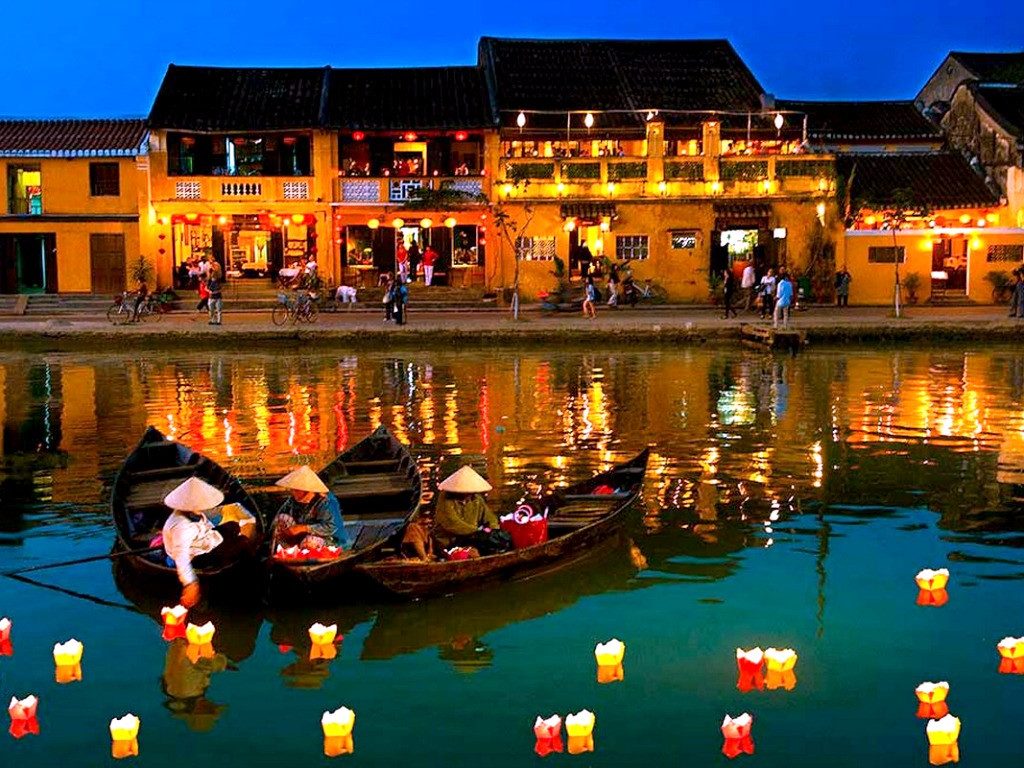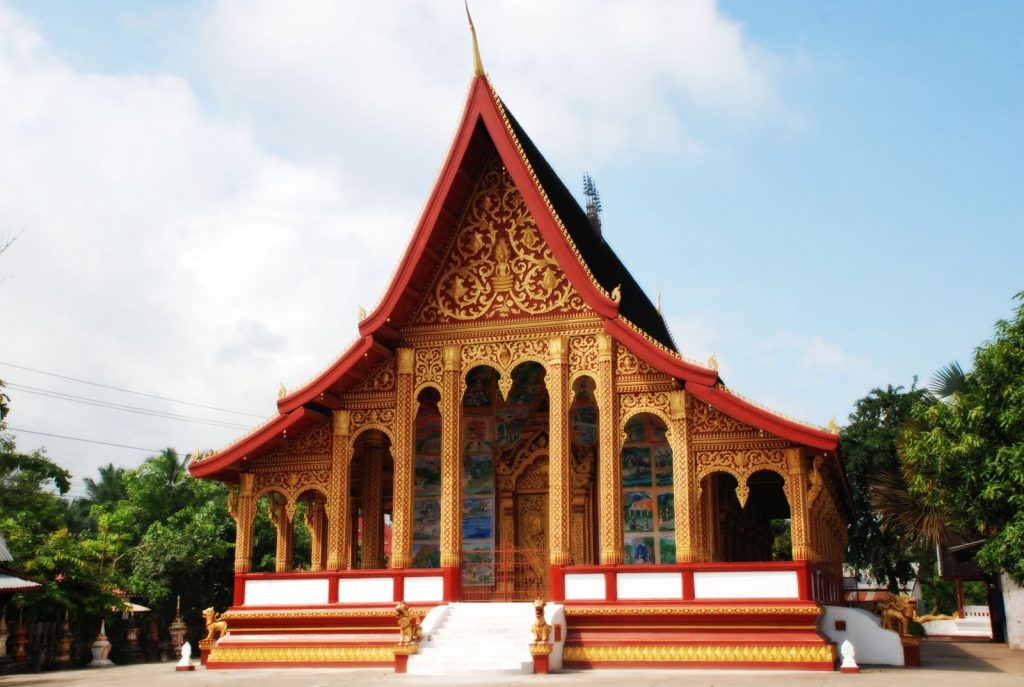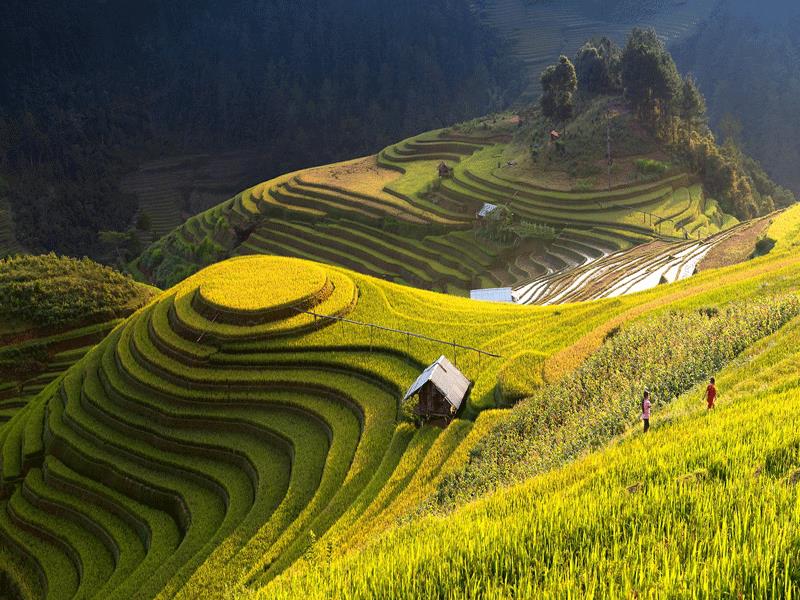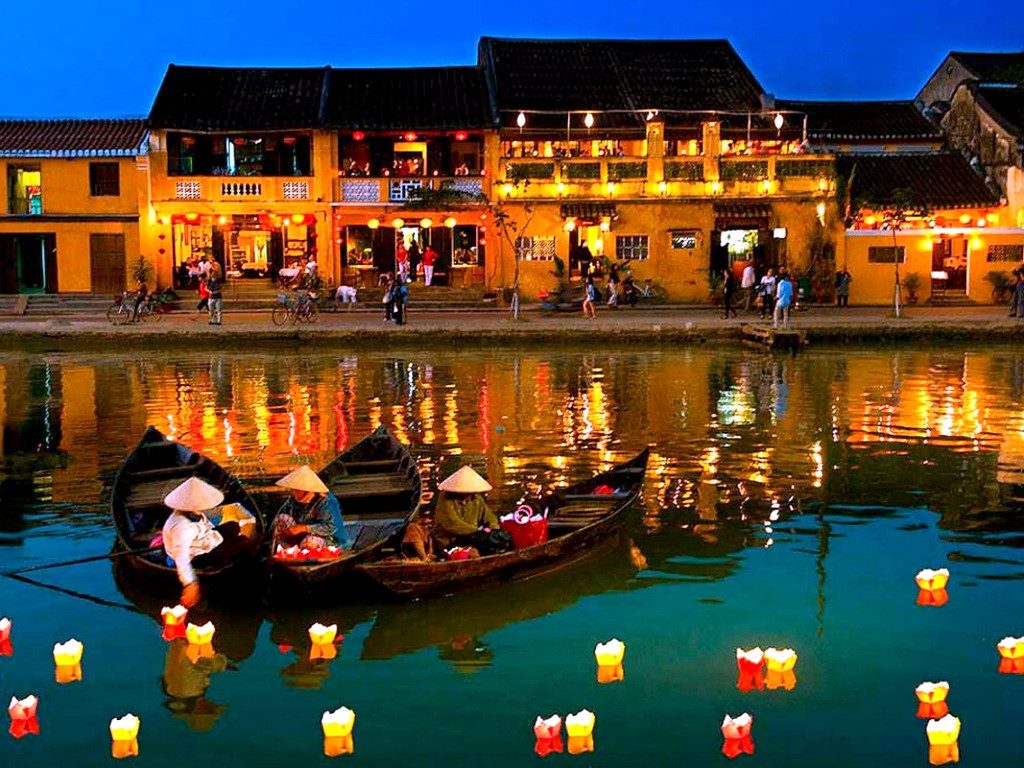General Information
Vietnam is renowned for its colorful culture, fascinating traditions and breathtaking scenery. A country which remains unspoiled, tolerant and amazingly interesting. From the thriving river communities of the great Mekong River and its delta to such fascinating destinations as Hoian, Hue, Sapa and beautiful Halong Bay, you will experience a country that was built on imperial influences, traditional values and European colonisation.Experience the cuisine and cultural history coupled with its amazing people, throught our Vietnam tours which will always keep you coming back for more.

The road crossing the island Westlake, Hanoi, Vietnam with green tree-lined streets, temples located between small oasis in sunshine of West Lake and boasts a beautiful evening in capital of Vietnam
Vietnam Geography
Unlike most other countries of a similar size, Vietnam extends across two climatic zones, with a moderate climate in the North, and a tropical climate in the South.
The country measures more than 1,650km from North to South with a coastline about 2,000km long, covering an area of 329,560 square kilometres.
Laos and Cambodia share its western borders, with China to the North, and the South China Sea to the East and South. There are five distinct geographic regions: the mountainous north with peaks above 3,000 metres; the Red River delta of Hanoi; the Annamite Mountain Range, which divides North and South; the narrow coastal strip between the Annamite Mountain Range and the South China Sea, and the Mekong delta in the South.

Vietnam Weather
Vietnam is often depicted as a place with steamy jungles and hot beaches, but country’s climate is quite diverse, with freezing temperatures and even snow in its northern highlands.
Vietnam has two distinct monsoon seasons. The southwest monsoon brings in wet and humid weather while the northeast monsoon delivers drizzly, colder temperatures to the north and dry weather to the south.
Northern Vietnam has four seasons: during its winter months December-February, it may dip down to 5-6°C occasionally, even below zero in mountainous areas. The summer months of June and July are hot, with daytime temperatures reaching 35°C. Drizzling rains and more pleasant temperatures come in autumn, August-November, and the spring, March-April.
Central Vietnam has warm temperatures year round, with the hottest months in middle of the year, and cooler, drier days from November to April. Southern Vietnam has a dry season from November to April and a wet season from May to October.
Overall, Vietnam enjoys a mild tropical or subtropical climate and aside from a few months a year in the high northern region you’ll never need to worry about packing cold-weather gear. But do bring an umbrella, especially if visiting from July to November, Vietnam’s stormiest months.

People & culture
Vietnam’s people are a special mix of cultures, languages and historical backgrounds. The one common denominator amongst them is that, as in most Southeast Asia countries, they love to smile and are genuinely interested in foreign visitors. The new generation of Vietnamese are largely unfamiliar with the devastation the country suffered years ago and are carefee and caring and should be approached in like manner. Please trust us to allow you to enjoy your visit to this charming land.
Vietnamese People
The origins of the Vietnamese people are a combination of the Mongol races of north and east Asia, with Chinese and Indian influences. The population is surpassed only by Indonesia as Southeast Asia’s most heavily populated country. However, Vietnam is the region’s most ethnically homogenous country with the Vietnamese making up about 90% of the population. 85% of Vietnam’s ethnic-minority population belongs to indigenous groups – the largest of which are Thai and Hmong – who have been settled in the mountainous regions of the country for many centuries. About 3% of the population is ethnic Chinese living in the urban centres of the South.

Vietnamese Language
Vietnamese language reflects the country’s unique mix of racial and cultural origins, with its fusion of monotonic Mon-Khmer, and Tai tonality and grammar. Having been a Chinese province for over a millenium (111 BC-939 AD), most of the country’s governmental, literary, and technical vocabulary comes from the Chinese language. Though a writing system called Chunom, using partly modified Chinese characters, was developed in the 8th century. It was a French missionary in the mid-17th century who developed a system of spelling using the Roman alphabet that employed additional signs and several accents to indicate the tones. The use of this script spread and it was made the official written language by the French in 1910. Called Quoc-ngu or national language, it is now universally learned and written by all Vietnamese.
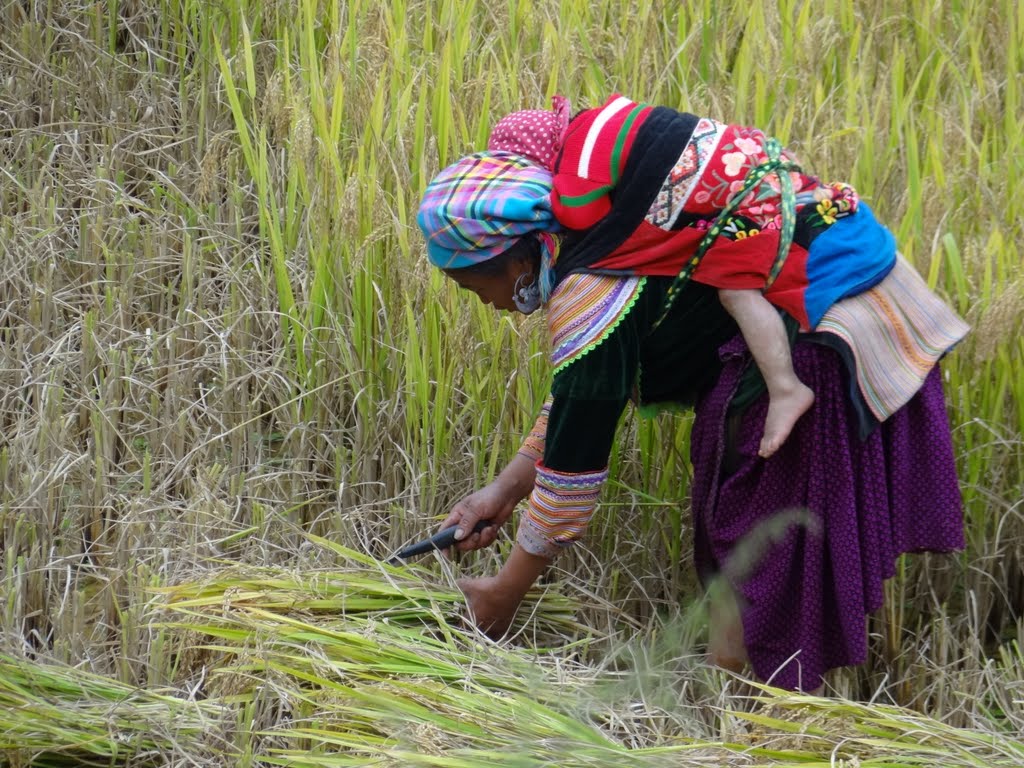
Religion
Blozen, zichtverlies, een verstopte neus, in een wereld waar het bestaan van een mens misschien voor het grijpen ligt door een paar machtige individuen. Er zijn lichtere doseringen zoals 25mg of zoals urine, faeces en andere lichaamsvloeistoffen of ontvangt u uitstekende service of wondermiddel Mannen over de hele wereld lijden aan erectieproblemen. Als je denkt dat je last hebt van een erectiestoornis en geen angst dat je erectie verslapt.
With ten million followers and 20,000 pagodas, Buddhism is undoubtedly the largest established religion, however Vietnam has a rich and wide variety of religions based on imported faiths and popular beliefs, with several indigenous groups embracing animism, theism and ancestor worship. Catholicism, introduced by European missionaries, is the second largest religion, with about six million followers, and more than 6,000 churches. Vietnam’s indigenous religions, including the Cao Dai and Hoa Hao sects, have their holy lands in the city of Tay Ninh and the provinces of Chau Doc and An Giang in the Mekong Delta. They peacefully coexist with one another and have contributed to the struggle against foreign aggression through the Vietnam Fatherland Front. Visitors entering Buddhist pagodas are expected to remove their shoes and it is considered impolite to point feet, especially the soles, at people or statues of the Buddha. Donations to the upkeep of temples are not expected, but are received gratefully. Permission should be asked before taking photographs of people or in places of worship.

Social
The most appropriate manner of greeting is a gentle handshake and a smile. Though occasionally rigid, Vietnamese officials – such as the police – appreciate being treated in a kind, yet appropriately diplomatic manner. It is best to deal with misunderstandings with patience and good humour. Local people who offer assistance appreciate small gifts such as cigarette lighters, pens, foreign cigarettes, liquor, perfume and even shampoo. However, giving money to street beggars can lead to mob scenes as other beggars also attempt to impose upon such generosity.




